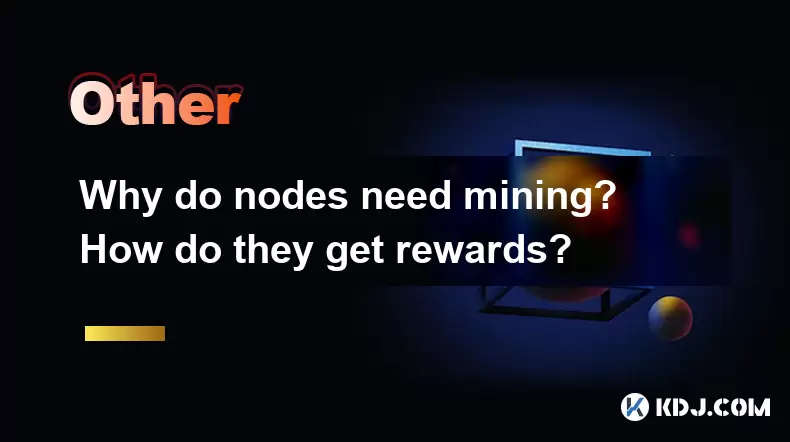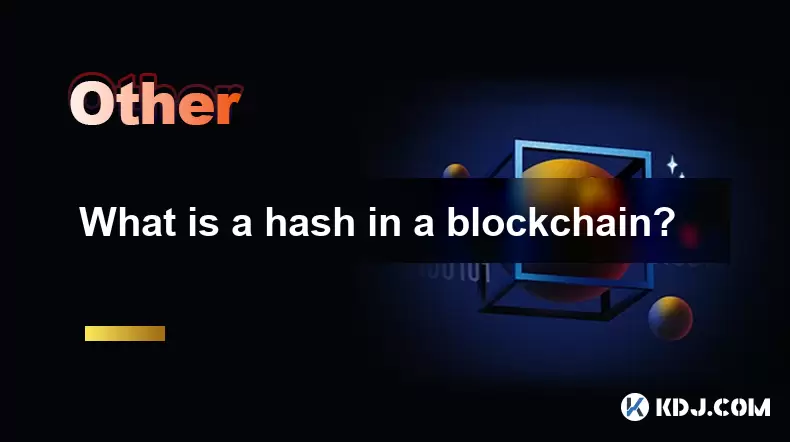-
 Bitcoin
Bitcoin $113900
-1.39% -
 Ethereum
Ethereum $3517
-4.15% -
 XRP
XRP $3.009
1.59% -
 Tether USDt
Tether USDt $0.9997
-0.04% -
 BNB
BNB $766.8
-1.41% -
 Solana
Solana $164.6
-2.38% -
 USDC
USDC $0.9998
-0.02% -
 TRON
TRON $0.3277
0.65% -
 Dogecoin
Dogecoin $0.2023
-1.67% -
 Cardano
Cardano $0.7246
0.05% -
 Hyperliquid
Hyperliquid $38.27
-4.77% -
 Sui
Sui $3.528
-0.52% -
 Stellar
Stellar $0.3890
-0.73% -
 Chainlink
Chainlink $16.16
-2.69% -
 Bitcoin Cash
Bitcoin Cash $539.9
-4.38% -
 Hedera
Hedera $0.2425
-2.00% -
 Avalanche
Avalanche $21.71
-0.97% -
 Toncoin
Toncoin $3.662
5.73% -
 Ethena USDe
Ethena USDe $1.000
-0.02% -
 UNUS SED LEO
UNUS SED LEO $8.964
0.35% -
 Litecoin
Litecoin $107.7
2.33% -
 Shiba Inu
Shiba Inu $0.00001223
-0.40% -
 Polkadot
Polkadot $3.617
-0.97% -
 Uniswap
Uniswap $9.052
-2.49% -
 Monero
Monero $295.1
-3.79% -
 Dai
Dai $0.9999
0.00% -
 Bitget Token
Bitget Token $4.315
-1.85% -
 Pepe
Pepe $0.00001060
0.11% -
 Cronos
Cronos $0.1342
-2.72% -
 Aave
Aave $256.0
-0.87%
Why do nodes need mining? How do they get rewards?
Nodes mine to secure blockchain networks, validate transactions, and earn rewards like block rewards and transaction fees through the Proof of Work process.
May 15, 2025 at 04:15 pm

Mining is a crucial aspect of many blockchain networks, particularly those that use a Proof of Work (PoW) consensus mechanism. Nodes in these networks engage in mining to secure the network and validate transactions, which in turn allows them to earn rewards. This article will delve into the reasons why nodes need to mine and how they receive their rewards.
The Role of Nodes in Blockchain Networks
In blockchain networks, nodes are essential components that maintain the integrity and security of the network. They store copies of the blockchain, validate transactions, and relay information to other nodes. There are different types of nodes, but in the context of mining, we focus on full nodes and mining nodes. Full nodes maintain a complete copy of the blockchain and enforce its rules, while mining nodes participate in the mining process to add new blocks to the blockchain.
Why Nodes Need to Mine
Mining is necessary for several reasons:
Securing the Network: Mining helps to secure the blockchain by making it computationally expensive to alter past transactions. Miners compete to solve complex mathematical puzzles, and the first to solve the puzzle gets to add a new block to the blockchain. This process makes it difficult for malicious actors to tamper with the blockchain.
Validating Transactions: Miners validate transactions by including them in the blocks they mine. This ensures that only legitimate transactions are added to the blockchain, maintaining its integrity.
Creating New Coins: In many cryptocurrencies, mining is the method by which new coins are introduced into circulation. For example, in Bitcoin, miners are rewarded with newly minted bitcoins for each block they successfully mine.
The Mining Process
Mining involves solving a cryptographic puzzle, known as the Proof of Work (PoW). The process can be broken down into several steps:
Transaction Collection: Miners collect unconfirmed transactions from the network's memory pool (mempool).
Block Creation: Miners create a new block and include the collected transactions. They also add a special transaction called the coinbase transaction, which is how miners receive their rewards.
Solving the Puzzle: Miners compete to find a nonce (a number used once) that, when combined with the block's data, produces a hash that meets the network's difficulty target. This is a trial-and-error process that requires significant computational power.
Block Verification: Once a miner finds a valid nonce, they broadcast the new block to the network. Other nodes verify the block's validity, including the transactions and the PoW solution.
Adding the Block: If the block is verified, it is added to the blockchain, and the miner receives the block reward.
How Nodes Get Rewards
Nodes receive rewards primarily through two mechanisms:
Block Rewards: When a miner successfully adds a new block to the blockchain, they are awarded a certain number of new coins. This is known as the block reward. For example, in Bitcoin, the block reward started at 50 BTC and halves approximately every four years.
Transaction Fees: In addition to the block reward, miners also collect transaction fees from the transactions included in the block. These fees are paid by users to prioritize their transactions and are an incentive for miners to include them in the next block.
The process of receiving rewards can be detailed as follows:
Coinbase Transaction: When a miner creates a new block, they include a coinbase transaction. This transaction has no inputs and one output, which sends the block reward and transaction fees to the miner's address.
Reward Calculation: The total reward for a miner is the sum of the block reward and the transaction fees from all transactions in the block.
Reward Distribution: Once the block is added to the blockchain, the reward is automatically credited to the miner's address. The miner can then spend or transfer these coins at their discretion.
The Importance of Mining Rewards
Mining rewards are crucial for the sustainability of PoW networks. They incentivize miners to continue participating in the network, which is essential for its security and operation. Without these rewards, miners would have little motivation to invest in the necessary hardware and electricity costs required for mining.
Challenges and Considerations
While mining is essential, it comes with challenges:
Energy Consumption: Mining requires significant computational power, which leads to high energy consumption. This has raised concerns about the environmental impact of mining.
Centralization Risks: The high costs associated with mining can lead to centralization, where only a few entities can afford to mine profitably. This can potentially threaten the decentralized nature of the blockchain.
Reward Halving: In some cryptocurrencies, such as Bitcoin, the block reward is designed to halve periodically. This can affect miners' profitability and may lead to changes in mining behavior.
Frequently Asked Questions
Q: Can anyone become a miner?
A: Yes, anyone with the necessary hardware and software can become a miner. However, the profitability of mining depends on factors such as the cost of electricity, the efficiency of the mining equipment, and the current reward structure of the cryptocurrency.
Q: What happens if two miners find a valid block at the same time?
A: In the event of a block conflict, the network follows the longest chain rule. Both blocks are temporarily added to the blockchain, but miners will work on extending the chain that they received first. Eventually, one chain will become longer, and the other block will be orphaned, meaning its transactions will need to be included in a future block.
Q: How do mining pools work?
A: Mining pools are groups of miners who combine their computational resources to increase their chances of solving the PoW puzzle and earning rewards. The pool's total reward is then distributed among its members based on their contributed computing power. This allows individual miners to have a more consistent income, even if they do not have the resources to mine independently.
Q: What is the role of difficulty in mining?
A: The difficulty of the PoW puzzle adjusts periodically to maintain a consistent block time. If blocks are being mined too quickly, the difficulty increases, making the puzzle harder to solve. Conversely, if blocks are being mined too slowly, the difficulty decreases. This mechanism ensures that the rate of new block creation remains stable, regardless of the total computational power of the network.
Disclaimer:info@kdj.com
The information provided is not trading advice. kdj.com does not assume any responsibility for any investments made based on the information provided in this article. Cryptocurrencies are highly volatile and it is highly recommended that you invest with caution after thorough research!
If you believe that the content used on this website infringes your copyright, please contact us immediately (info@kdj.com) and we will delete it promptly.
- Bitcoin Strategy: Saylor's Not Hoarding, He's Building an Empire
- 2025-08-02 22:30:12
- Bitcoin Bloodbath: Macro Pressures and Liquidations Unleash Crypto Chaos
- 2025-08-02 22:30:12
- Tron, Cold Wallets, and Crypto Trends: What's Hot in the Market?
- 2025-08-02 23:10:12
- Bitcoin's Wild Ride: Davinci, Investors, and the $500K Dream
- 2025-08-02 23:50:12
- Worldcoin, Identity, WLD Price: Decoding the NYC Crypto Buzz
- 2025-08-02 21:10:12
- Shiba Inu: Utility and Community Strength Drive Crypto's Evolution
- 2025-08-02 21:50:12
Related knowledge

What is the difference between on-chain and off-chain transactions?
Aug 02,2025 at 04:22pm
Understanding On-Chain TransactionsOn-chain transactions refer to digital asset transfers that are recorded directly on a blockchain ledger. These tra...

What is the double-spending problem and how does blockchain prevent it?
Aug 02,2025 at 01:07pm
Understanding the Double-Spending ProblemThe double-spending problem is a fundamental challenge in digital currency systems where the same digital tok...

What is the difference between a blockchain and a database?
Aug 01,2025 at 09:36pm
Understanding the Core Structure of a BlockchainA blockchain is a decentralized digital ledger that records data in a series of immutable blocks linke...

How does blockchain handle scalability?
Aug 02,2025 at 02:58pm
Understanding Blockchain Scalability ChallengesBlockchain scalability refers to a network's ability to handle an increasing volume of transactions wit...

What is a hash in a blockchain?
Aug 02,2025 at 05:28am
Understanding the Concept of Hash in BlockchainA hash in the context of blockchain technology refers to a unique digital fingerprint generated by a cr...

What is a hash in a blockchain?
Aug 02,2025 at 04:43am
Understanding the Concept of Hash in BlockchainA hash in the context of blockchain technology refers to a unique digital fingerprint generated by a cr...

What is the difference between on-chain and off-chain transactions?
Aug 02,2025 at 04:22pm
Understanding On-Chain TransactionsOn-chain transactions refer to digital asset transfers that are recorded directly on a blockchain ledger. These tra...

What is the double-spending problem and how does blockchain prevent it?
Aug 02,2025 at 01:07pm
Understanding the Double-Spending ProblemThe double-spending problem is a fundamental challenge in digital currency systems where the same digital tok...

What is the difference between a blockchain and a database?
Aug 01,2025 at 09:36pm
Understanding the Core Structure of a BlockchainA blockchain is a decentralized digital ledger that records data in a series of immutable blocks linke...

How does blockchain handle scalability?
Aug 02,2025 at 02:58pm
Understanding Blockchain Scalability ChallengesBlockchain scalability refers to a network's ability to handle an increasing volume of transactions wit...

What is a hash in a blockchain?
Aug 02,2025 at 05:28am
Understanding the Concept of Hash in BlockchainA hash in the context of blockchain technology refers to a unique digital fingerprint generated by a cr...

What is a hash in a blockchain?
Aug 02,2025 at 04:43am
Understanding the Concept of Hash in BlockchainA hash in the context of blockchain technology refers to a unique digital fingerprint generated by a cr...
See all articles

























































































